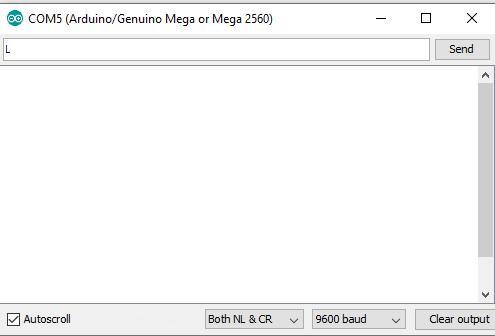

- Python pyserial examples how to#
- Python pyserial examples serial#
- Python pyserial examples code#
- Python pyserial examples windows#
This method receives as input the number of bytes to read in each call and thus we will pass the value 1, to read byte by byte.
Python pyserial examples serial#
To read a byte from the serial port, we call the read method of the Serial object. Since our ESP program will echo all the bytes back to the Python program, we will create a while loop that will keep reading from the Serial port byte by byte, until a number of bytes equal to the size of the array sent is returned back. We do it by calling the write method. We will send some arbitrary array of bytes which we will create with the bytearray function. Since the connection is already opened, we can start sending some bytes to the ESP. Now that we have configured everything needed, we simply open the Serial port by calling the open method on the Serial object.

In my case it is COM5, yours will most likely be different. Note that this is the same COM port we use on the Arduino IDE to upload programs to the ESP. We will also need to specify the COM port of the ESP. To to do, we assign the value 115200 to the baudrate data member of the Serial class object. Thus, we need to set the baud rate to match the one used on the ESP. Next we need to configure our Serial connection parameters. We will use the default constructor with no arguments and set the connection parameters after that. Next, we will create an object of class Serial.
Python pyserial examples code#
We will start out Python code by importing the serial module, which will be needed for us to establish a serial connection with the ESP board. Note that we have added a small delay between each iteration of the main loop. The final Arduino code can be seen below. This method receives as input the byte we want to send. Since our application will echo the content received back to the sender, we will then write it back by calling the write method on our Serial object. To read a byte from the Serial port, we simple call the read method on the Serial object, which will return the next byte available. Thus, we can write a loop that will keep reading the bytes of the Serial port while the available method indicates that there are bytes available. This method receives no arguments and returns the number of bytes available for reading. There, we will check if there are bytes available for reading by calling the available method of the Serial object. Now we will move on to the Arduino loop function, where we will handle de data received. We will use a value of 115200, which we will also need to use later on the Python program. The begin method receives as input the baud rate in bits per second. Note that the Serial object is of class HardwareSerial. In the Arduino setup function, we will open a serial communication with a call to the begin method of the Serial object. The Arduino code for this tutorial is very simple.


The tests on the ESP32 were performed using a DFRobot’s ESP-WROOM-32 device integrated in a ESP32 FireBeetle board.
Python pyserial examples windows#
To do it, we simply need to give the following command on the Windows command line: The easiest way to install PySerial is by using pip, the Python package installer. In the Python program, we will use the PySerial module to be able to establish the Serial connection. The Arduino program will act as an echo program, which will return back the bytes received through serial.
Python pyserial examples how to#
The objective of this post is to explain how to establish a Serial connection between a Python program and an Arduino program running on the ESP8266 and on the ESP32. The objective of this post is to explain how to establish a Serial connection between a Python program and an Arduino program running on the ESP8266 and on the ESP32. The tests on the ESP32 were performed using a DFRobot’s ESP-WROOM-32 device integrated in a ESP32 FireBeetle board.


 0 kommentar(er)
0 kommentar(er)
